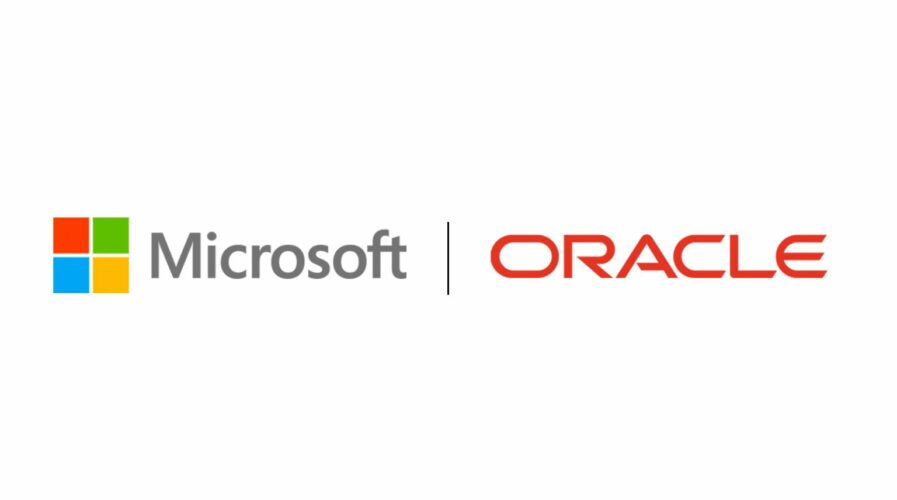
(Source – Microsoft)
Oracle and Microsoft expand its partnership in revolutionizing database services
- Oracle and Microsoft collaborate to provide direct, streamlined access to Oracle databases on Oracle Cloud Infrastructure for Azure customers.
- Users can migrate or build new applications on Azure and connect to high-performance and high-availability managed Oracle Database services.
Many organizations are looking to digitalize their businesses and are taking the necessary steps to move their operations to the cloud. Having said that, Oracle Corp and Microsoft Corp recently revealed the general availability of Oracle Database Service for Microsoft Azure.
With this new offering, Microsoft Azure customers can easily provision, access, and monitor enterprise-grade Oracle Database services in Oracle Cloud Infrastructure (OCI) with a familiar experience. Users can migrate or build new applications on Azure and then connect to high-performance and high-availability managed Oracle Database services such as Autonomous Database running on OCI.
What Azure and OCI multi-cloud capabilities can offer
Thousands of customers have relied on Microsoft and Oracle software to run their mission-critical applications during the last 20 years. Hundreds of enterprises have used secure and private interconnections in 11 different global regions, including Singapore since Oracle and Microsoft teamed up to launch the Oracle Interconnect for Microsoft Azure in 2019.
“Microsoft and Oracle have a long history of working together to support the needs of our joint customers, and this partnership is an example of how we offer customer choice and flexibility as they digitally transform with cloud technology. Oracle’s decision to select Microsoft as its preferred partner deepens the relationship between our two companies and provides customers with the assurance of working with two industry leaders,” said Corey Sanders, corporate vice president, Microsoft Cloud for Industry and Global Expansion.
As such, Microsoft and Oracle are extending this collaboration to further streamline the multi-cloud experience with Oracle Database Service for Microsoft Azure. In fact, this is a component of Oracle’s strategy to support customers by providing them with the cloud services they require, wherever they need them, according to Leo Leung, vice president of product management at Oracle, during a press briefing recently.
“In many cases, the public cloud is perfect for the workload or set of tasks that the customer wants to perform and we’re continuing to expand that. We currently have 39 hyperscale cloud regions worldwide locations and [further expansion is planned].”
The public cloud isn’t the only one that customers are interested in or request for, he continued. Being able to provide services on-premises is crucial since between 60% and 80% of workloads, particularly mission-critical workloads, are still on-premises. Recently, they did this with Dedicated Region announcements.
Dedicated Region is an on-premises cloud that brings all of Oracle’s cloud services closer to on-premises legacy applications and data that might never move to the public cloud.
Leung stated, “Over the years, the data cloud customer and this database service for Azure is just another component of our overall strategy, in this case, to offer our services across the clouds into Azure.
Modernizing customers’ database services approach
The amount of data that enterprises are gathering, managing, and analyzing on a daily basis has grown enormously as a result of their fast expansion. The use of legacy database models, which are unable to keep up with the rate of business expansion and the resulting rise in data, is a typical data burden.
When asked how easy it is for businesses to transition from a legacy database approach to a modern one, Leung said that customers have a choice. “If customers feel comfortable with moving to a completely automated service and serverless type of approach where all the common management tasks are completed for them, there is an option to use the autonomous database. That’s part of why we offer multiple flavors – to give customers the options of continuing with their existing system or moving to something that’s more “hands-off”,” he explained.
Are there risks behind not modernizing their database approach?
Steve Zivanic, Global VP Database and Autonomous Services, Oracle, claims that each business has its own unique set of business requirements. “Some customers continue to want to run on-premises, on Exadata database machines. There are some customers that want to move to a cloud on-premises environment like Exadata Cloud at Customer or Dedicated Region. Then, you have some customers who want to go fully public cloud or a combination of all 3,” he said.
The customer can move at their own pace depending on their business requirements, and most significantly, what their applications dictate what their applications require, according to his conclusion that Oracle is highly open and collaborative in relation to solving their business criteria.
READ MORE
- Ethical AI: The renewed importance of safeguarding data and customer privacy in Generative AI applications
- How Japan balances AI-driven opportunities with cybersecurity needs
- Deploying SASE: Benchmarking your approach
- Insurance everywhere all at once: the digital transformation of the APAC insurance industry
- Google parent Alphabet eyes HubSpot: A potential acquisition shaping the future of CRM


